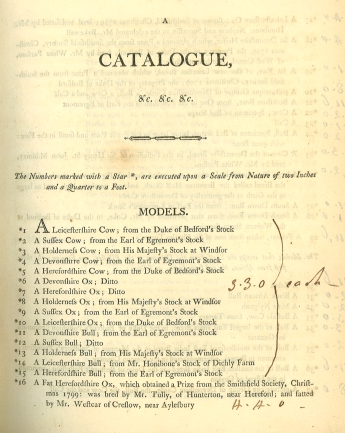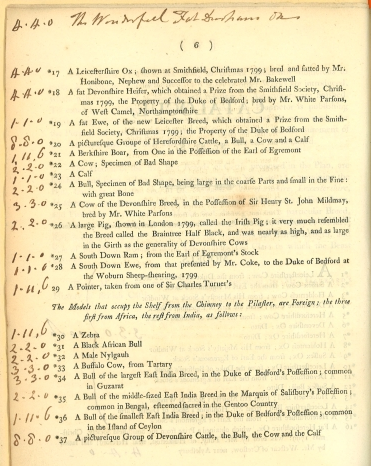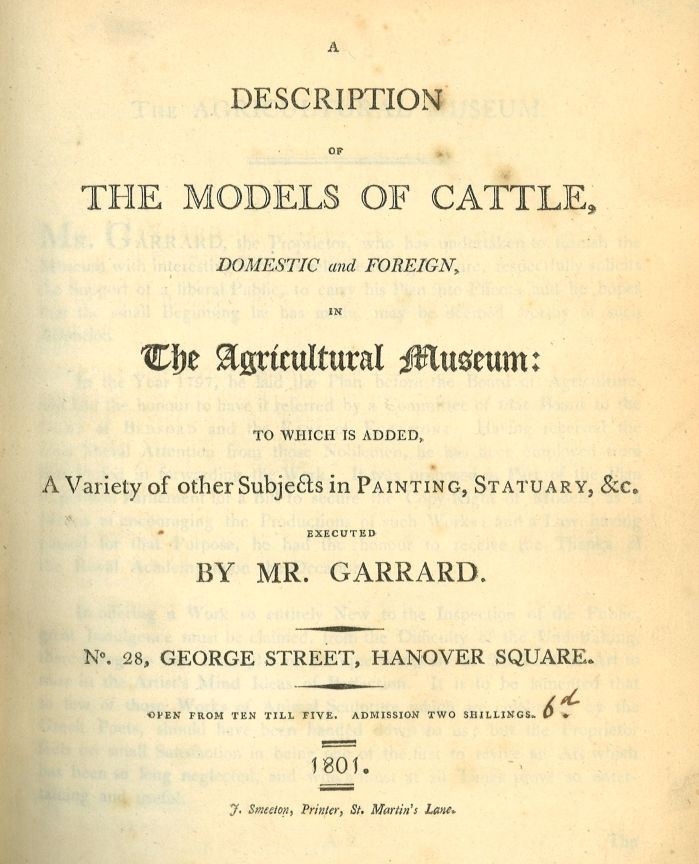Hilary Matthews discovers a giant Irish pig and other livestock in an early 19th-century museum catalogue
I am currently undertaking a PhD in history and my thesis looks to understand how the livestock portraits, painted around the beginning of the nineteenth century, functioned within the society that produced them. Within my research I am particularly interested in the London livestock artist, George Garrard (1760-1826), who produced scale models of cattle, sheep and pigs, around 1795-1801. To accompany these cattle models, he also produced engravings of them, which he sold in a folio to subscribers.

Garrard opened an Agricultural Museum in London in 1801 to publicise his agriculturally-themed work, but apart from a note in the Board of Agriculture's minutes about a visit to the museum, nothing else is known about it. I believed Garrard had produced a catalogue to coincide with the opening of it, but I thought there were no extant copies. However, I found that the Library of the Royal Bath & West of England Society owned a copy. This was a eureka moment for me - a reaction that will resonate with anyone who has ever carried out any research. I visited the Library in January 2017 to see the catalogue, as well as other books from their extensive agricultural collection.
Seeing the catalogue exceeded my expectations because it contained far more information than I could ever have hoped for. Because the Society was founded in 1777, I am presuming that William Matthews, the secretary at that time, visited Garrard's museum and this is his copy of the catalogue. The front page tells me that entry to the museum cost 2 shillings and 6 pence (12.5p today), but that this included the cost of the catalogue.

By reading the catalogue I know that Matthews must have seen a large selection of models of different breeds of cattle, a few sheep and a model of an Irish pig. As this pig was modelled to a scale of 2.25 inches to the foot, it was actually 4 feet 2 inches tall in real-life and must have been massive. Garrard says in his catalogue that it was nearly as high, and as large round the girth, as a Devonshire cow. There were also models of various wild animals on display, including a zebra, buffalo and a black African bull as well as paintings and prints of livestock. However, the catalogue also reveals that Garrard did not have enough agriculturally-themed pieces – so he 'padded' out his exhibits with other non-agricultural items that he had sculpted or painted. These 'other' items were an eclectic mix of classical sculptures and paintings, including a sculpture of the Apotheosis of Hercules, (complete with verses from Ovid's Metamorphoses in the catalogue), and paintings as diverse as a view of a brewery and a barn door!
Now I know the library has such an extensive collection of material that is particularly relevant to my research, I am looking forward to my next visit.
